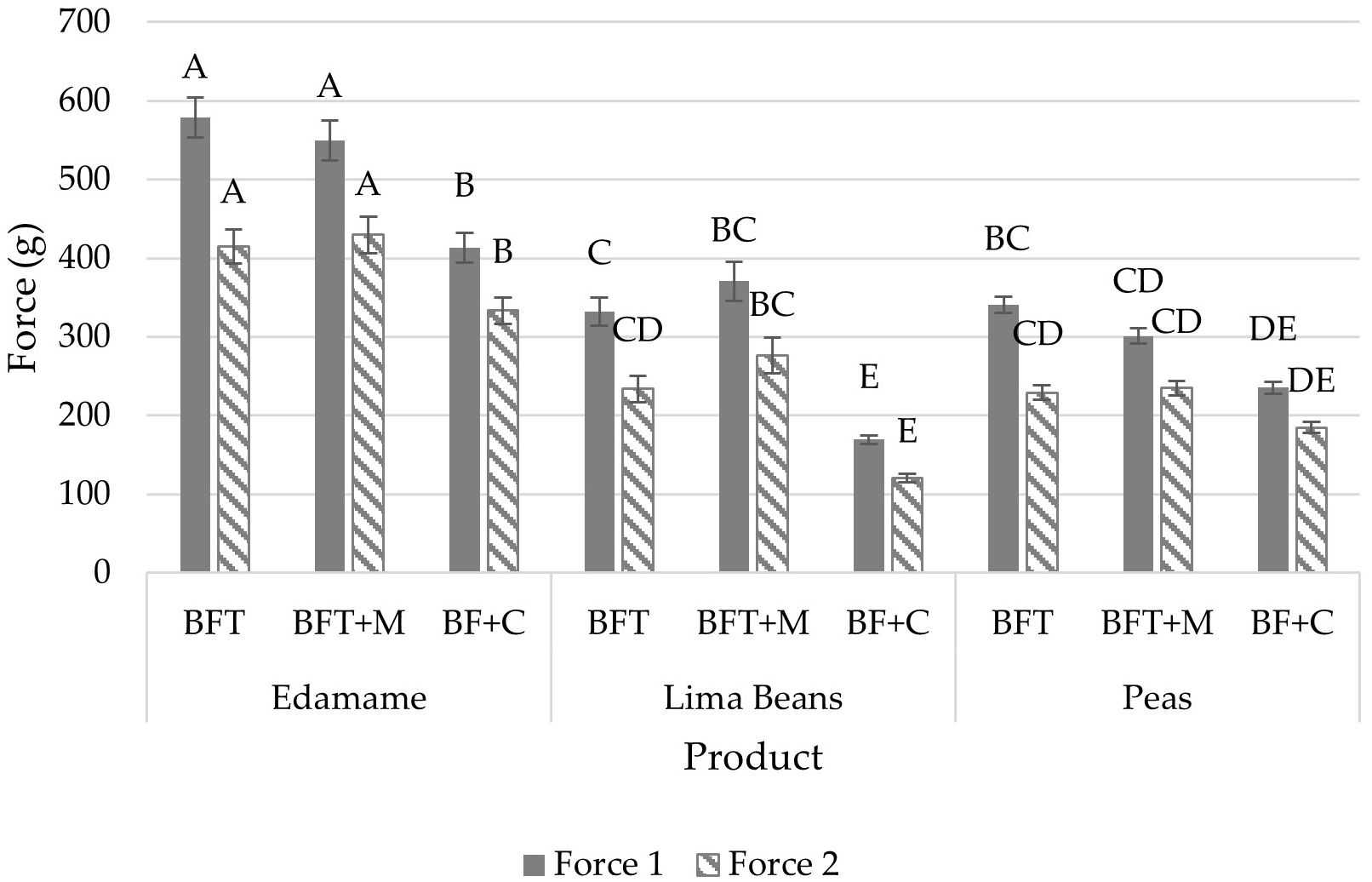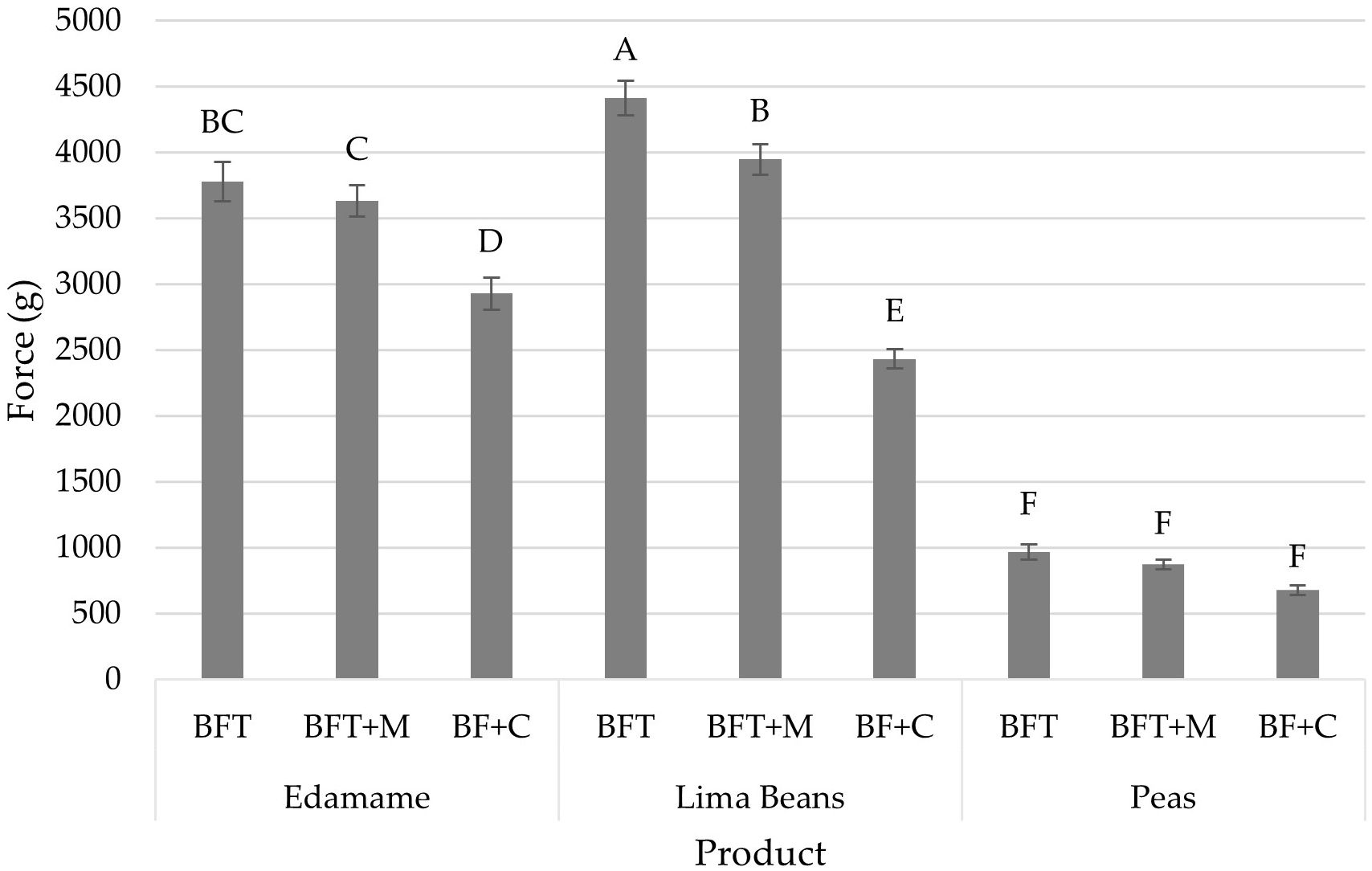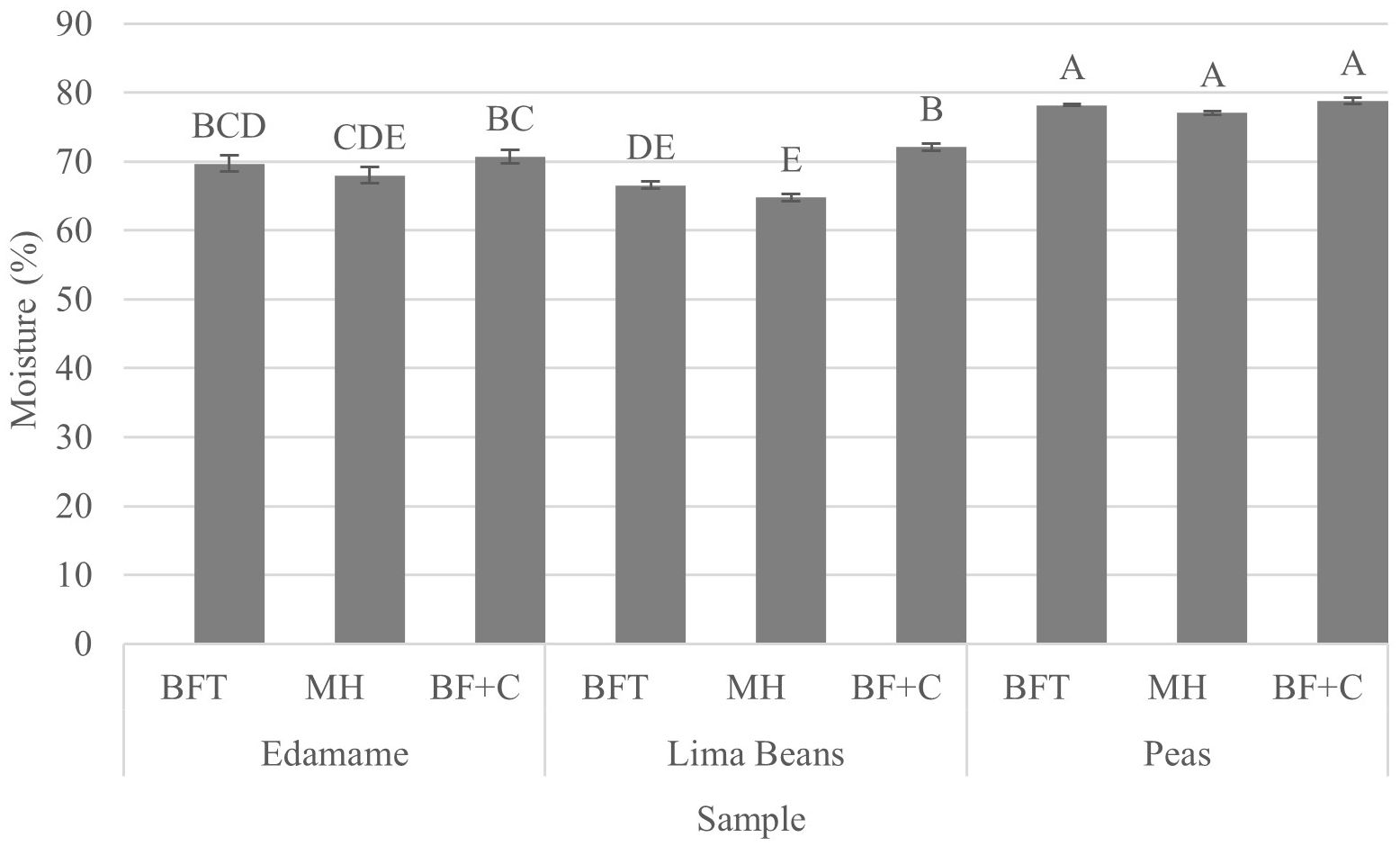- 1Department of Food Science and Technology, Virginia Tech, Blacksburg, VA, United States
- 2School of Plant and Environmental Sciences, Virginia Tech, Blacksburg, VA, United States
A Corrigendum on
Quantitative texture analysis comparison of three legumes
By Miller R, Duncan S, Yin Y, Zhang B and Lahne J (2023). Front. Plant Sci. 14:1208295. doi: 10.3389/fpls.2023.1208295
In the published article, there was an error in Figure 1, Figure 2, and Figure 3 as published. The error bars included in the figures were incorrect. The corrected Figures and captions appear below.

Figure 1. Puncture results (mean) of force 1 (g) and force 2 (g) by product (edamame; lima beans; peas) and treatment (blanch/freeze/thaw (BFT); BFT+microwave (BFT+M); BF+stove-top cooking (BF+C)). Error bars were constructed using 1 standard error from the mean. Tukey’s HSD connecting letters indicate similarities within force 1 and force 2 respectively and were calculated with a fixed effects model.

Figure 2. Compression results (mean) of force (g) by product (edamame; lima beans; peas) and treatment (blanch/freeze/thaw (BFT); BFT+microwave (BFT+M); BF+stove-top cooking (BF+C)). Error bars were constructed using 1 standard error from the mean. Tukey’s HSD connecting letters indicate similarities and were calculated with a fixed effects model.

Figure 3. Results (mean) of moisture (%) by product (edamame; lima beans; peas) and treatment [blanch/freeze/thaw (BFT); BFT+microwave (BFT+M); BF+stove-top cooking (BF+C)]. Error bars were constructed using 1 standard error from the mean. Tukey’s HSD connecting letters indicate similarities and were calculated with a fixed effects model.
The authors apologize for this error and state that this does not change the scientific conclusions of the article in any way. The original article has been updated.
Publisher’s note
All claims expressed in this article are solely those of the authors and do not necessarily represent those of their affiliated organizations, or those of the publisher, the editors and the reviewers. Any product that may be evaluated in this article, or claim that may be made by its manufacturer, is not guaranteed or endorsed by the publisher.
Keywords: texture, legume, vegetables, quality, compression, puncture
Citation: Miller R, Duncan S, Yin Y, Zhang B and Lahne J (2024) Corrigendum: Quantitative texture analysis comparison of three legumes. Front. Plant Sci. 15:1490251. doi: 10.3389/fpls.2024.1490251
Received: 02 September 2024; Accepted: 10 September 2024;
Published: 13 November 2024.
Edited and Reviewed by:
Juan A. Fernández, Polytechnic University of Cartagena, SpainCopyright © 2024 Miller, Duncan, Yin, Zhang and Lahne. This is an open-access article distributed under the terms of the Creative Commons Attribution License (CC BY). The use, distribution or reproduction in other forums is permitted, provided the original author(s) and the copyright owner(s) are credited and that the original publication in this journal is cited, in accordance with accepted academic practice. No use, distribution or reproduction is permitted which does not comply with these terms.
*Correspondence: Rebekah Miller, cmViZWthaG0yMEB2dC5lZHU=
 Rebekah Miller
Rebekah Miller Susan Duncan
Susan Duncan Yun Yin
Yun Yin Bo Zhang
Bo Zhang Jacob Lahne
Jacob Lahne